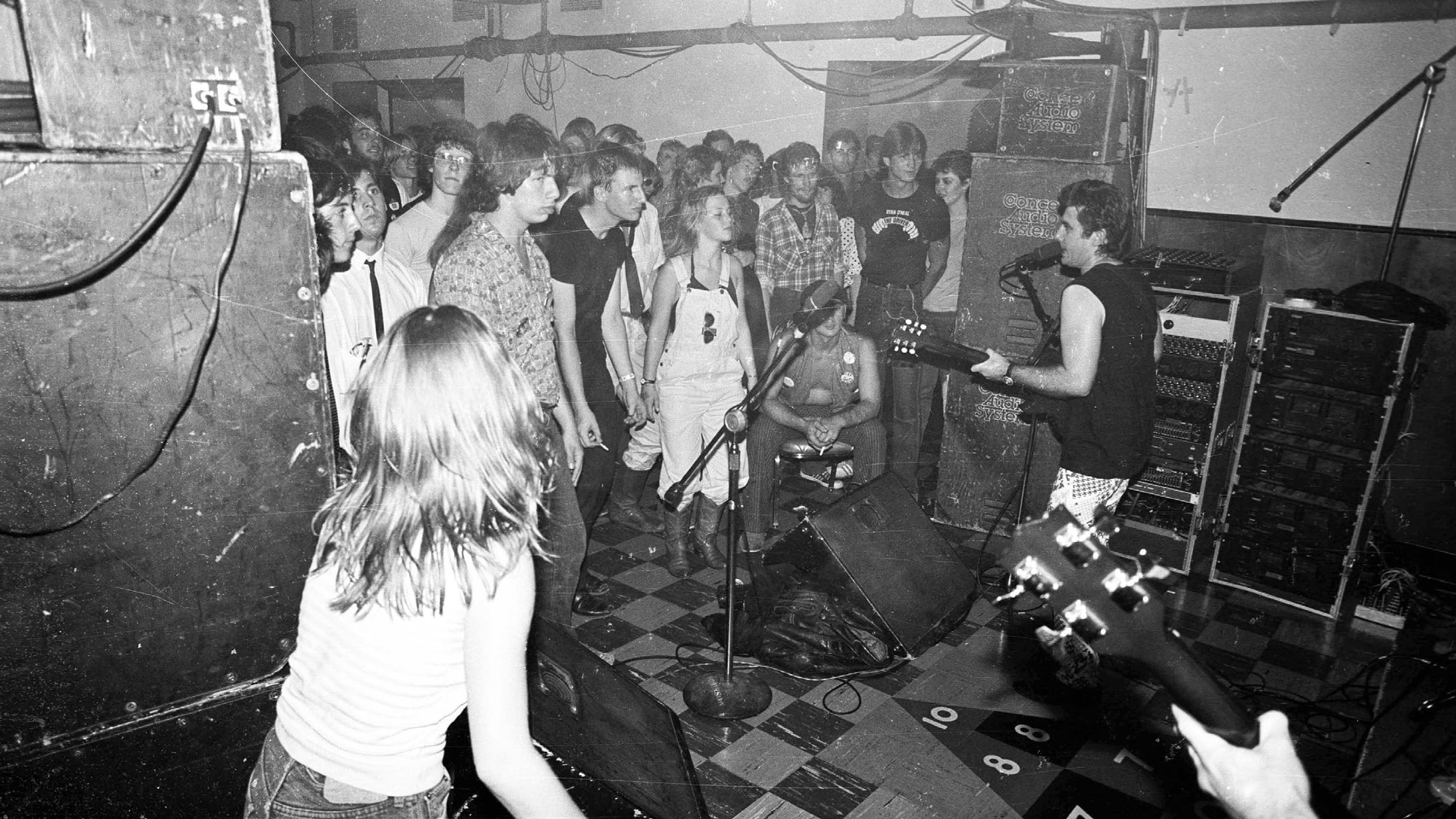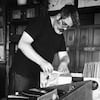Punk rock, like most popular genres, has come a long way from its scrappy, grungy origins. Just ask anyone who has dropped triple digits for a ticket to see Green Day at Providence Park in September. Considering where punk is in our current era, it can be easy to skim past the seismic effect it had on the U.S. when it breached our borders in the late ‘70s. A new ecosystem of DIY shows, fanzines, and fashion, not to mention hundreds of new bands, burst forth like a flash flood.
“You didn’t have to be Emerson, Lake & Palmer or Yes,” says Fred “Noize” Seegmuller, one of the many people swept up by punk who helped support Portland’s nascent scene through his photography and management of a short-lived music venue called urban NOIZE. “You didn’t have to spend years in your bedroom practicing. You could just pick it up and start bashing away, and other folks around would encourage you.”
Those early days are the subject of Pioneers of Portland Punk 1977-1984, a new exhibit on display at the Collins Gallery on the top floor of Multnomah County Library’s downtown Central Library branch. Co-curated by Seegmuller and fellow early adopter Janice Morlan, with some crucial research help from local author and musician Mark Sten, the collection tells the story of Portland punk’s first flashes via thoughtfully organized displays. In one case is an annotated map pointing out the former location of punk-friendly venues and crucial spots like Northwest late-night hangout Quality Pie. Nearby are copies of fanzines, such as Revolting Teenagers Press and Oregon Organisms, a drool-inducing collection of vinyl, and reproductions of show flyers taped around the gallery’s support beams. It’s a beautifully egalitarian look at those early days with easily recognized names like The Wipers and Dead Moon sharing equal billing with less-celebrated artists like Sado-Nation, Ice 9, and Jungle Nausea.
What also comes through each piece of ephemera and news clipping on display in Pioneers is how wonderfully scrappy it all was. Everyone involved was learning how to participate on the fly and no one who wanted to be a part was excluded. “People just wanted to help and cooperate and contribute,” Seegmuller says. “Some people wanted to play music. Some people helped out with posters. Some people swept the floor. There wasn’t an attitude where you were only important if you were in a band.”
A prime exemplar is co-curator Morlan. She arrived on the scene via her then-boyfriend Dave Corboy who, at the time, played guitar in Sado-Nation, which performed a particularly slashing brand of hardcore. Inspired by the energy and volume of the music, but with little interest in starting a band of her own, she opted to document the scene through her camera even though, she says, “I knew nothing about photography.”
“I got a book from the library and figured it out,” she continued. “We had a little darkroom up in [punk venue] Clockwork Joe’s, and [all-female punk quartet] Neo Boys had a real rudimentary enlarger. I just used the heck out of that stuff and learned how to do it.” Morlan wound up snapping the cover photos for crucial albums like The Rats’ In a Desperate Red and 10-29-79, a compilation featuring many of the city’s best punk acts performing live at the former Earth Tavern, as well as capturing snapshots of dozens of live shows.
In addition to Morlan, Pioneers elevates the work of other behind-the-scenes actors like fellow photographer Maggie Hirsch; Wipers frontman Greg Sage, who started Trap Records to document the community on vinyl; and Mike King, the now-revered graphic designer who got his start making posters advertising local punk shows. King will be back in town this Saturday, July 20, to participate in a panel discussion at the library, exploring Portland’s punk past alongside Seegmuller, Poison Idea’s Jerry A, Sado-Nation member Mish Bondage, and Rats/Dead Moon legend Toody Cole.
The only difficulty I found with Pioneers is its hard end date. The legacy of the artists and personalities involved in those early days of punk isn’t much considered. Without Seegmuller’s urban NOIZE, we might not have gotten the beloved X-Ray Cafe. The principles of Alternative Arts Association, a nonprofit created at the time to support these underground artists, begat the work of PDX Pop Now and Friends of Noise. And the music of that era continues to resonate throughout the local scene, influencing the likes of Collate, The Shitfits, and J. Graves.
If the significance of what they wrought has any bearing on the folks behind Pioneers, they don’t cop to it. Morlan admits she checked out of the scene around 1983. What they did experience was a renewed sense of kinship with their peers as they reached out to folks to source the artifacts and ephemera for the exhibit. Just as before, everyone rushed to take part.
“We’re really excited about this because it’s going to give us a renewed sense of community,” Seegmuller says, “which was what was so important. Like I said, one of the biggest legacies of the scene was getting people involved. You didn’t have to sit on the sidelines. You could make a contribution.”
SEE IT: Pioneers of Portland Punk 1977-1984 shows at Collins Gallery at Multnomah County Central Library, 3rd floor, 801 SW 10th Ave., multcolib.org. 10 am–6 pm Monday and Wednesday–Saturday, noon–8 pm Tuesday, 10 am–5 pm Sunday, through Aug. 29.

